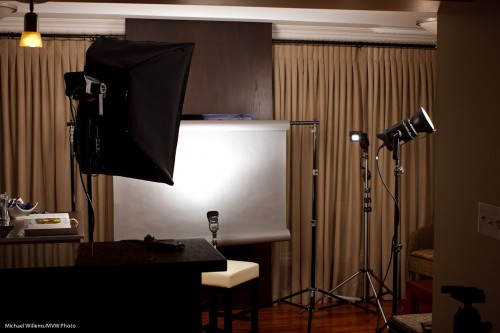There are three types of studio light:
- Hotlight: continuous lights. Like lightbulbs.
- Strobes: big studio flashes.
- Speedlights: small on-camera or off-camera battery-powered flash units.
Hotlights (or continuous lights; i.e. light bulbs, like tungsten or fluorescent) have the advantage that you can see what they do while setting up the shot. They are what you learn at school, since they are easier. They have the drawbacks that they get hot, and that they use a lot of power – meaning more $$$ in bills, and larger cables and fuses. And they can make subjects squint.
Strobes are big flashes – they have none of the drawbacks, but also lack the advantage pof previews. This is why they have added “modelling lights” – continuous lights so you can see where you are aiming the light before you actually flash. But still, flashes take more metering and trial and error than continuous lights.
Speedlights are like strobes but they are portable and light. Drawbacks include the facts that they are not powerful, and that they are powered by batteries which run out, and that they can need more time between flashes to recharge.
Most studio photographers use strobes today, but there is no bad or good decision. Like driving diesel or gasoline, they both get you from A to B.
Here’s a recent portrait setup: I used two strobes here, and two speedlights (for space reasons).

